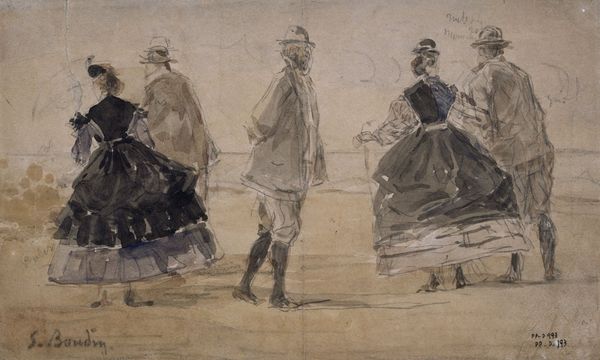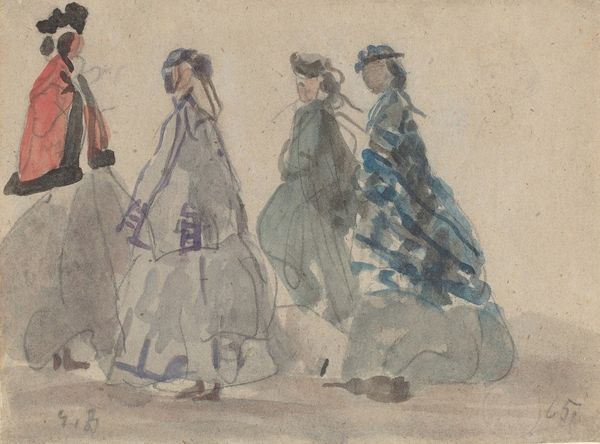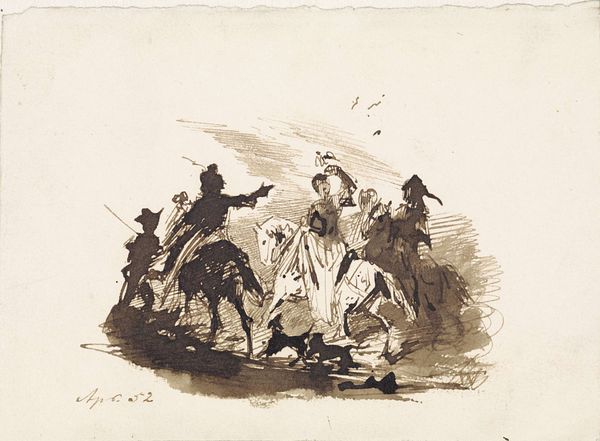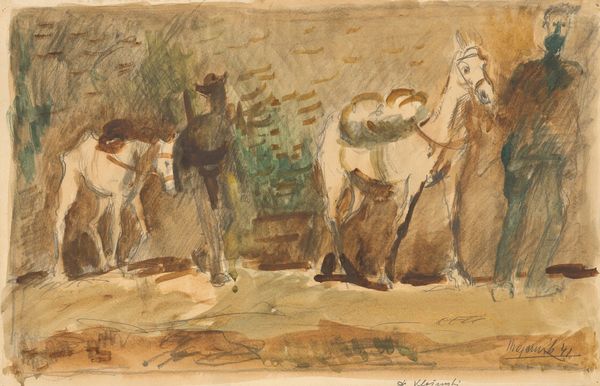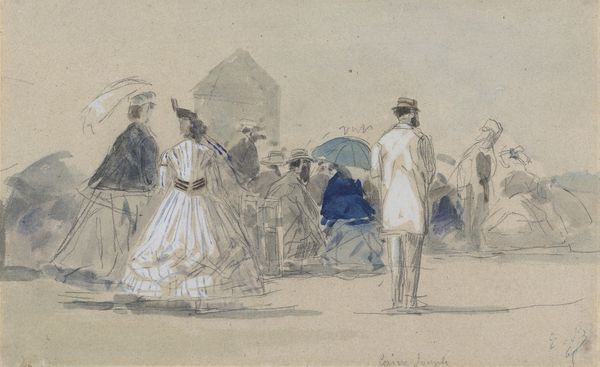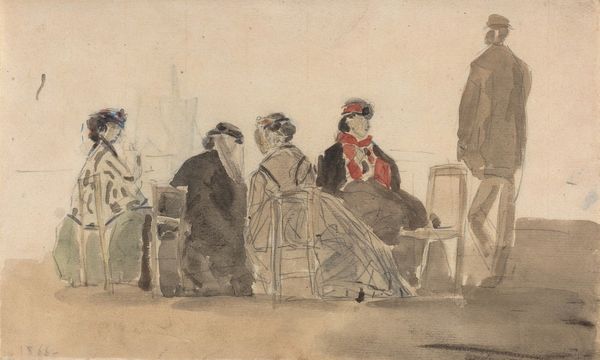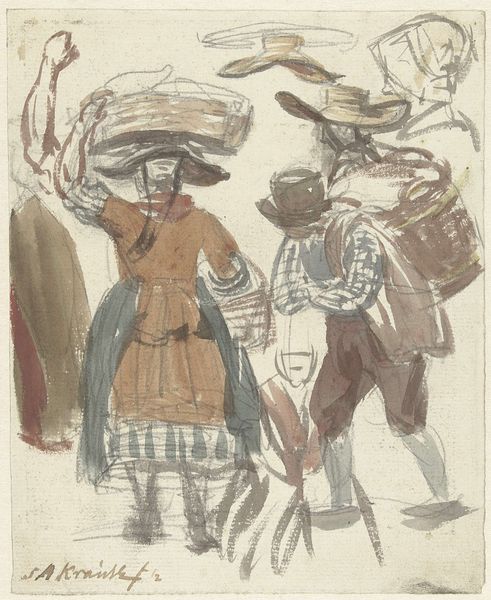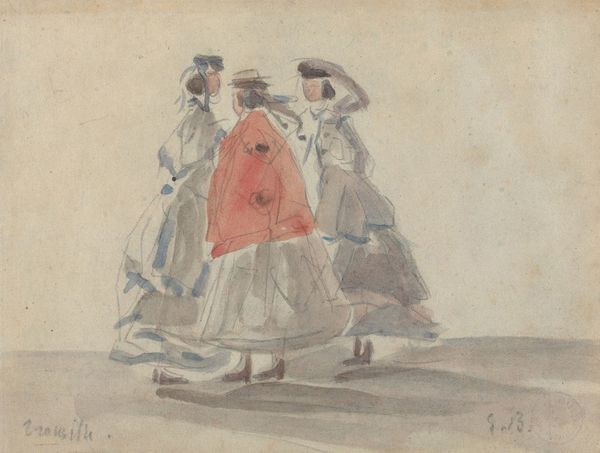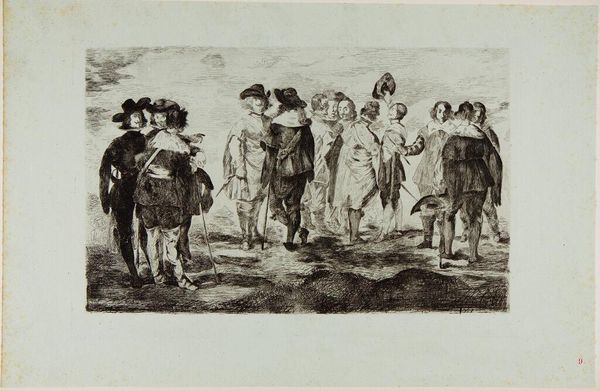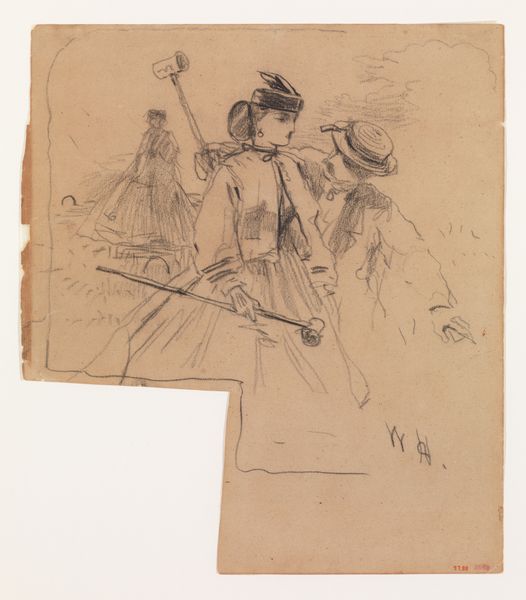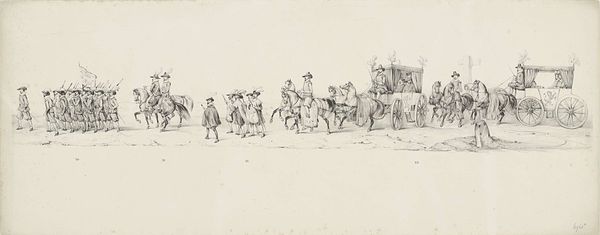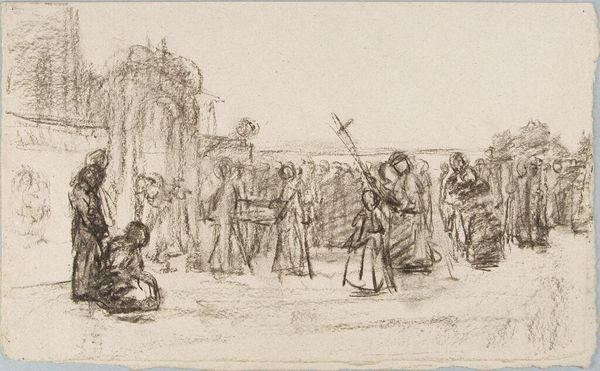
drawing, plein-air, watercolor
#
drawing
#
impressionism
#
plein-air
#
landscape
#
charcoal drawing
#
figuration
#
oil painting
#
watercolor
#
group-portraits
#
watercolour illustration
#
genre-painting
#
charcoal
#
watercolor
Copyright: Public Domain: Artvee
Editor: This is "Femme assise et divers personnages au bord de la mer" by Eugène Boudin, likely from the late 1860s. It’s a watercolour and charcoal drawing of figures on a beach, with this faded, almost dreamlike quality. What story do you think it tells? Curator: Boudin’s work gives us glimpses into the lives of women during a period of rapid social change, wouldn't you say? Think about the rise of the bourgeoisie and its leisure culture. How do the figures' clothing and postures position them within that social strata? Editor: I guess their formal dresses suggest wealth. Is Boudin perhaps commenting on the performative aspects of their leisure, then? The fact they are turned away from us as well? Curator: Exactly! He is known as the "king of the skies", yet he focused on the figures in his composition. These beach scenes highlight gender and class dynamics within public spaces. Note also that, with impressionism's concern for the everyday, the image could be said to reject the classical, male-dominated historical narratives. Editor: It’s like he is subverting traditional art simply by depicting a normal day at the beach? Curator: Precisely. Consider also where they *aren’t* depicted: factories or farms, locations that suggest working women or peasants who toil on the land. We might also ask whose stories *aren't* represented here? Editor: Right, there is only one class shown. I hadn't thought of it in those terms. So Boudin is less focused on *what* they're doing, but *where* they are, and *how* that defines their experience and perhaps, by contrast, those who are not there with them? Curator: Exactly. What appears simple becomes a lens through which we can examine larger social and political issues. Editor: I see how seemingly passive representation can, in fact, contain such profound commentary. Curator: It offers valuable lessons, showing us art's role in capturing social transitions.
Comments
No comments
Be the first to comment and join the conversation on the ultimate creative platform.
